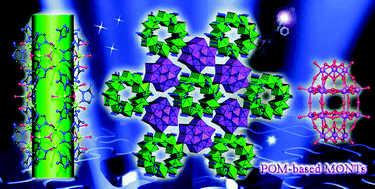Self-assembled arrays of polyoxometalate-based metal–organic nanotubes for proton conduction and magnetism†
Abstract
The first polyoxometalate-based metal–organic nanotube constructed via covalent bonds has been synthesized. POM anions stick the metal–organic nanotubes to build 3D nanotubular arrays. The stability, magnetic and proton conducting properties are investigated.


 Please wait while we load your content...
Please wait while we load your content...